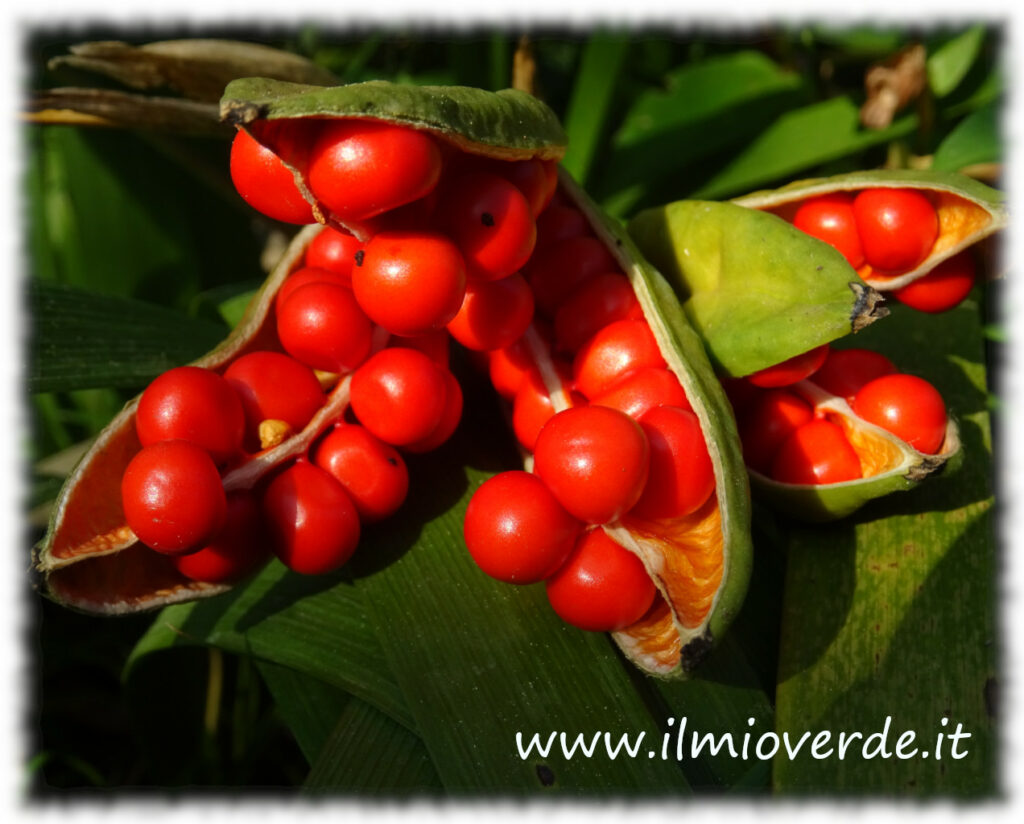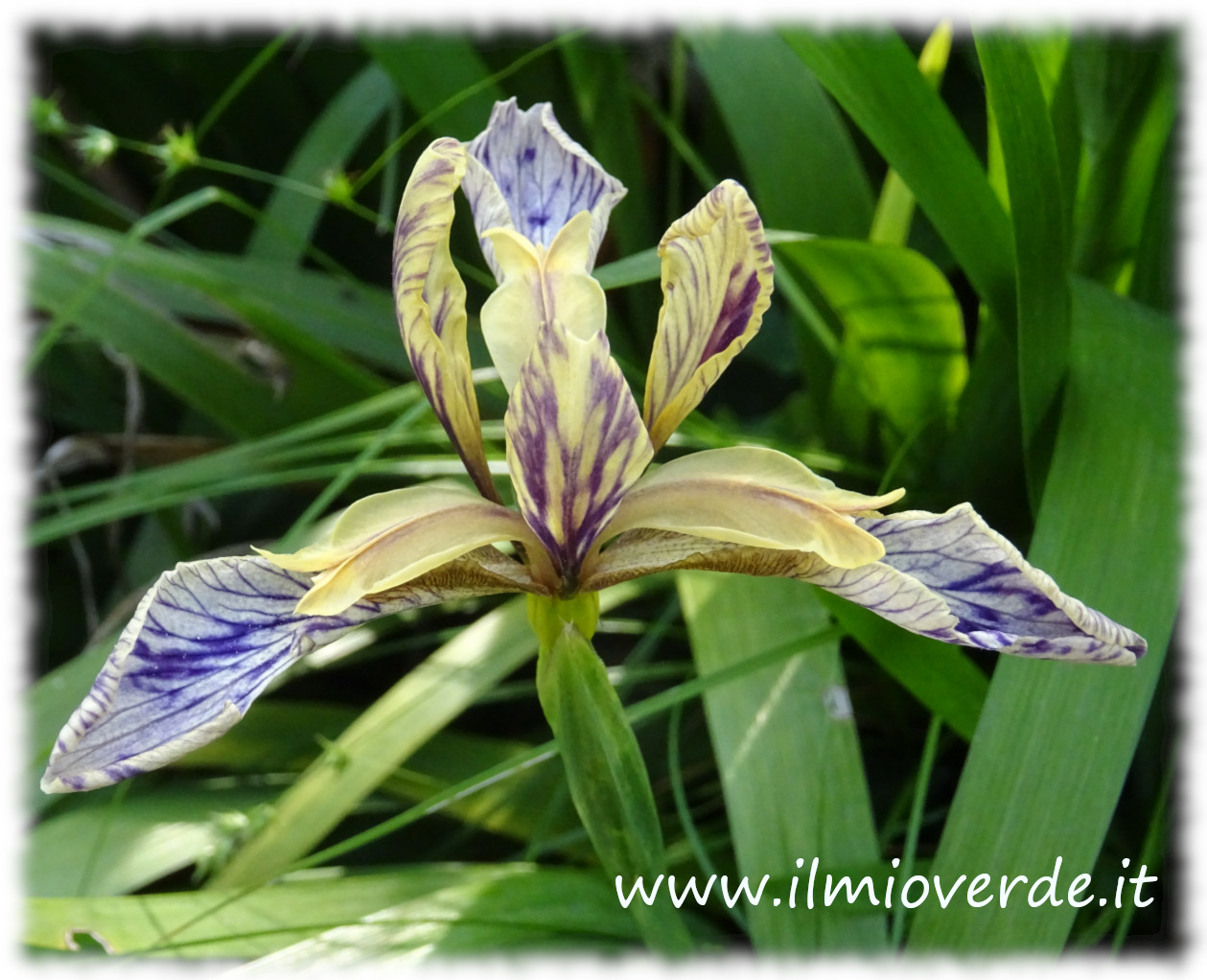Iris foetidissima
Iris foetidissima, commonly known as the Stinking Iris or Odorous Iris, is a perennial plant that stands out for its distinctive appearance and brightly coloured seeds. This plant is often used in ornamental gardens due to its unique foliage and unconventional flowers, which add charm to any green space.
Varieties of Iris foetidissima
The most common varieties of Iris foetidissima include:
- Iris f. ‘Variegata’: characterised by variegated leaves that add a splash of colour to the garden.
- Iris f. ‘Alba’: features white flowers, which are rarer compared to the standard variety.
Origins and History
Native to the temperate regions of Europe and Asia, Iris foetidissima has been historically used in gardens and landscapes, and continues to be a popular choice among gardeners.
Fresh Seeds of Iris foetidissima

The pods containing Iris foetidissima seeds are notable for their vibrant fire-red colour. These seeds, not only visually appealing, play a crucial role in the propagation of the plant. Once the seeds mature, they can be harvested and used for reproduction.
Characteristics
- Flowers: The flowers of Iris foetidissima are generally yellow-green and do not possess the typical fragrance found in other Iris varieties.
- Foliage: It features long, narrow leaves that can reach up to 60 cm in length.
Climate and Exposure
This plant thrives in temperate climates and can withstand moderate cold conditions. Additionally, it prefers positions in full sun or partial shade, tolerating complete shade well, making it ideal for shaded gardens.
Soil and Watering
A well-drained soil is essential, preferably with a clayey or sandy composition. The Odorous Iris requires moderate watering, avoiding water stagnation, especially in winter.
Fertilization and Reproduction
It is recommended to use a balanced fertilizer during the growing season, but without overdoing it. The reproduction of the Odorous Iris can occur through the division of rhizomes in spring or by seeds, which require a period of stratification to germinate.
Care and Advice
It is important to remove dead leaves and wilted flowers to keep the plant healthy. Additionally, check regularly for potential pest infestations.
Diseases and Culinary Use
Moreover, the Stinking Iris is known for its disease resistance. However, it is crucial to monitor watering conditions to prevent root rot. The seeds of Iris foetidissima are interesting for their appearance and can be used in decorations and floral arrangements.
Useful Links
- Iris: The beauty of rhizomatous flowers (…working…)
Related Keywords:
- Stinking Iris
- Odorous Iris
- Perennial Plants
- Ornamental Gardens
“Explore more fascinating plants and gardening tips at www.ilmioverde.it. Happy gardening!”
